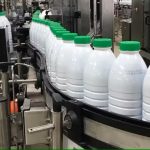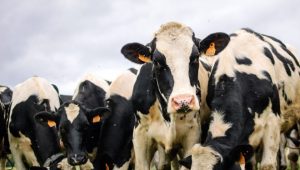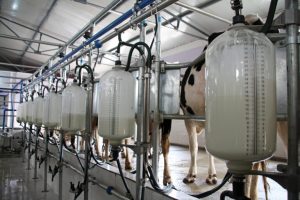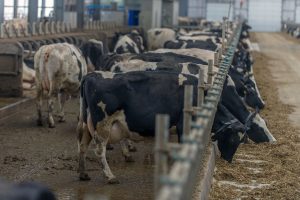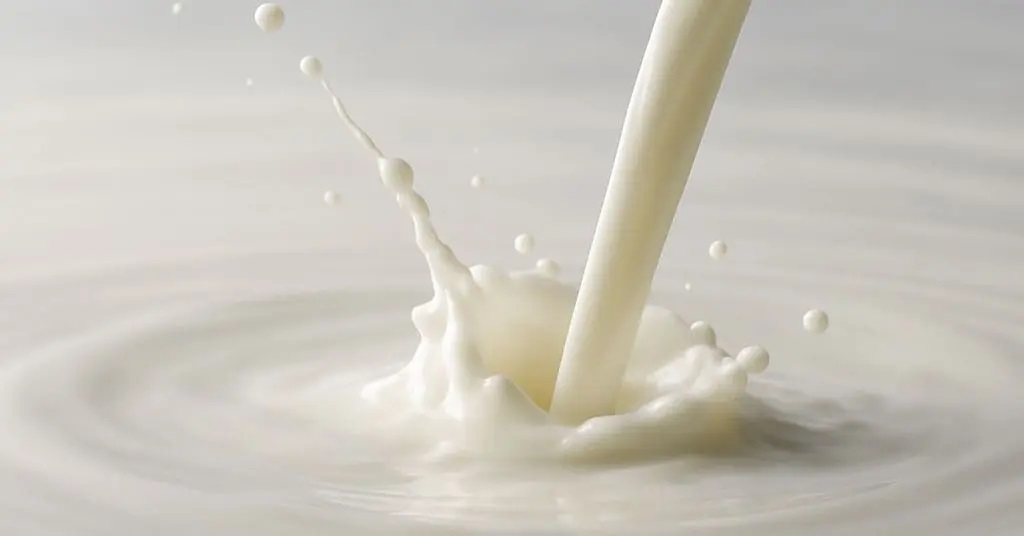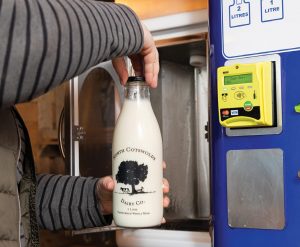
RaboResearch report predicts dairy farmers in most Big 7 regions will see higher revenue from rising milk production.
The global dairy market is on track to see modest growth in 2025, driven by a steady expansion in supply and rising export demand, despite evolving trade dynamics, according to a recent RaboResearch report. Key regions like the European Union and the U.S. are expected to lead production increases, while dairy farmers worldwide anticipate higher revenues due to elevated milk prices. However, China is experiencing a decline in milk production, with imports expected to improve.
Meanwhile, potential trade challenges loom as the U.S. shifts its global alignment, and consumer retail prices could rise, the bank added.
“While retail dairy prices experienced deflation in parts of 2024, offering relief after previous inflationary years, we expect higher farmgate milk prices to lead to increased consumer prices in 2025,” explained Lucas Fuess, senior dairy analyst for RaboResearch and lead author of the report. As the world navigates a soft economic landing after interest rate and inflation hikes, significant price increases at retail or dining establishments may face resistance from budget-conscious consumers.
Limited production growth expected
Slight growth for the global dairy market in 2025 will be driven by steady supply expansion and increasing export demand amid shifting trade dynamics. Following a challenging 2024 with weak milk production in key exporting regions and higher farmgate milk prices, the industry is now transitioning into a phase of supply expansion, fueled primarily by production growth in the EU and the U.S., with Oceania and South America also contributing. Despite the anticipated growth, the mild increase is expected to maintain market balance without leading to oversupply, the Rabobank Global Dairy Quarterly Q1 2025 report explained.
“RaboResearch expects milk production in the Big 7 export regions to expand by 8% YOY [year over year], with a similar gain in the first half of 2026. The forecast is driven largely by a return to production growth in both the EU, where production has oscillated between growth and contraction in recent quarters, and the U.S., where the typical annual gains of 1%+ have stagnated in recent years,” the report said.
The Big 7 regions include the EU, U.S., New Zealand, Australia, Brazil, Argentina and Uruguay.
In the U.S., the report said most areas are experiencing production growth in step with herd count growth, helped by lower feed costs. The exception is dairy leader California, which has taken the heaviest hit from H5N1 highly pathogenic avian influenza in its dairy herds. While not lethal to dairy cows, the virus does result in slightly lower milk production.
Margins and production growth look positive in the EU, but the bank said tariffs and bluetongue disease – which can reduce milk yields as much as 8% – could create headwinds.
Dry conditions could cause production growth to taper off in New Zealand and Australia. New Zealand is still benefiting from interest rate reductions and solid export demand thanks to a weaker currency and strong commodity prices, RaboResearch reported. Australia should likewise be buoyed by a softer currency as well as good commodity returns and farmgate prices.
In South America, drought could also affect Argentina and Uruguay, but RaboResearch forecasts production growth of 2% in Brazil and 4% in Argentina for 2025.
According to Fuess, China is diverging from global trends with a notable drop in milk production in 2024 following years of expansion. This decline, driven by fewer cows and unexpected reductions in the fourth quarter of 2024, has led to a revised forecast for 2025, with RaboResearch now estimating production will be down 2.6% year over year. Despite lower farmgate milk prices discouraging production, demand is expected to improve, although slowly, with imports anticipated to rise from the low levels of 2024.
RaboResearch expects dairy farmers in most regions to benefit from rising milk production in the form of increased revenue, particularly in New Zealand, which has the strongest farmer sentiment, supported by Fonterra’s record-high $10/kg NZD milk price forecast amid falling interest rates. Healthy margins are also reported in Australia, Brazil, the EU and the U.S., driven by elevated milk prices and lower feed costs – a trend observed globally this quarter, the news release said.
Potential challenges to global dairy trade
While China’s demand has declined, other regions show promising purchasing trends. For example, RaboResearch said U.S. cheese exports reached record highs in 2024, and New Zealand continues to find markets for its milk, supporting high milk prices.
“However, evolving trade barriers, particularly as the U.S. shifts its global alignment, pose potential challenges. Consumers must navigate recent inflationary pressures to maintain balanced trade and supported dairy prices throughout the year,” said Fuess.
The bank noted that trade barriers will remain a concern for U.S. trading partners in particular, with tariffs in the mix for Mexico, Canada and the EU. In addition, the RaboResearch report said the U.S.-China trade situation was never fully resolved after President Donald Trump’s first term in office and has now “escalated again, but tariffs so far exclude dairy products.” Retaliatory tariffs will be a key factor to watch, as this could negatively affect U.S. exports.
A trade deal between the EU and Mexico could pose an additional threat to U.S. trade volume with Mexico, in light of the tariff situation with both regions.
You can now read the most important #news on #eDairyNews #Whatsapp channels!!!
🇺🇸 eDairy News INGLÊS: https://whatsapp.com/channel/0029VaKsjzGDTkJyIN6hcP1K


